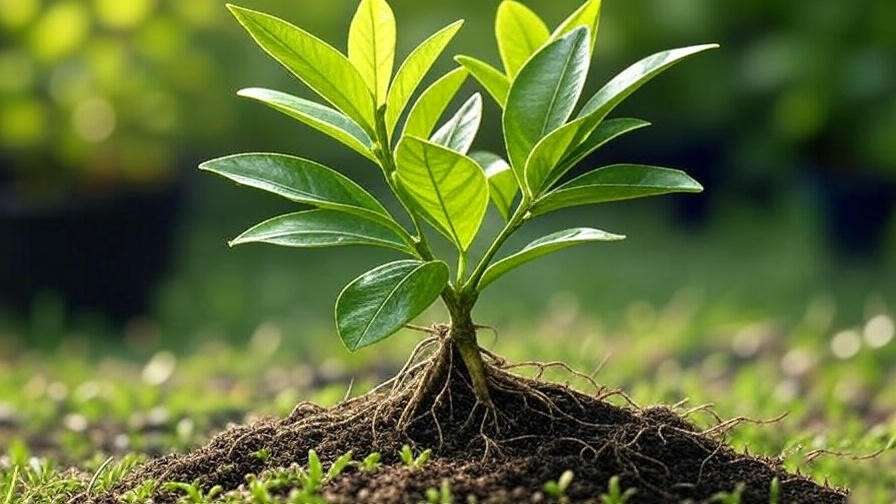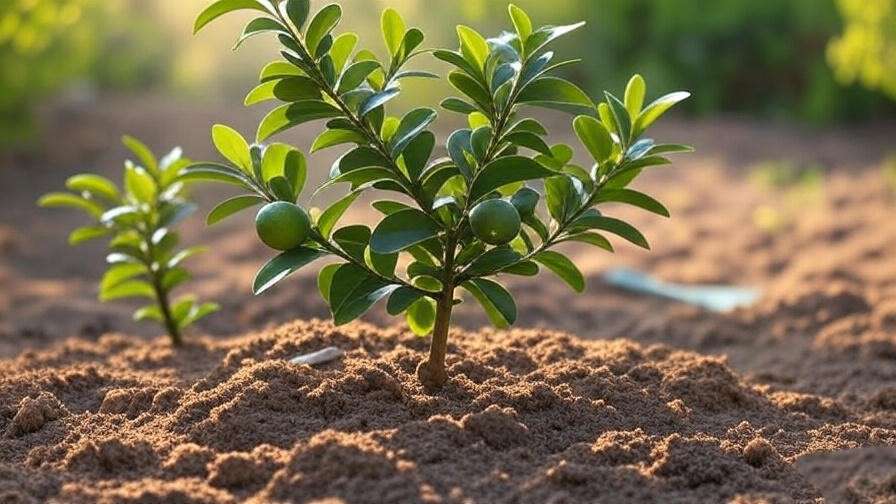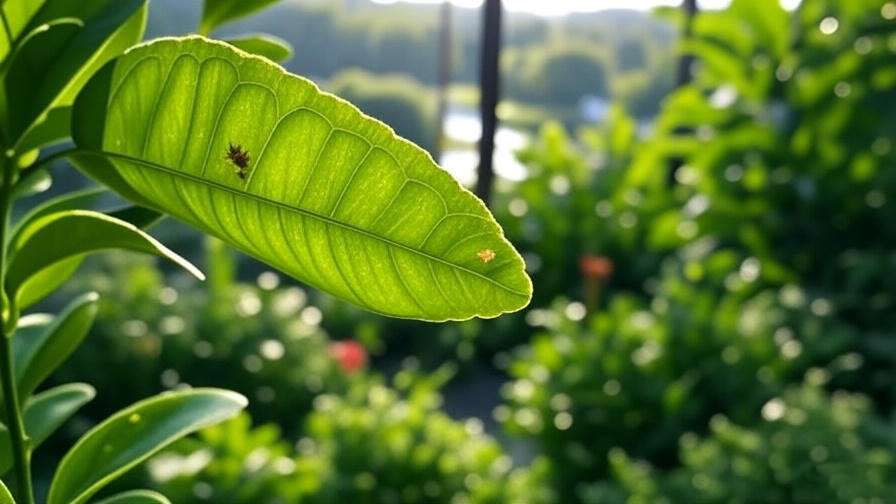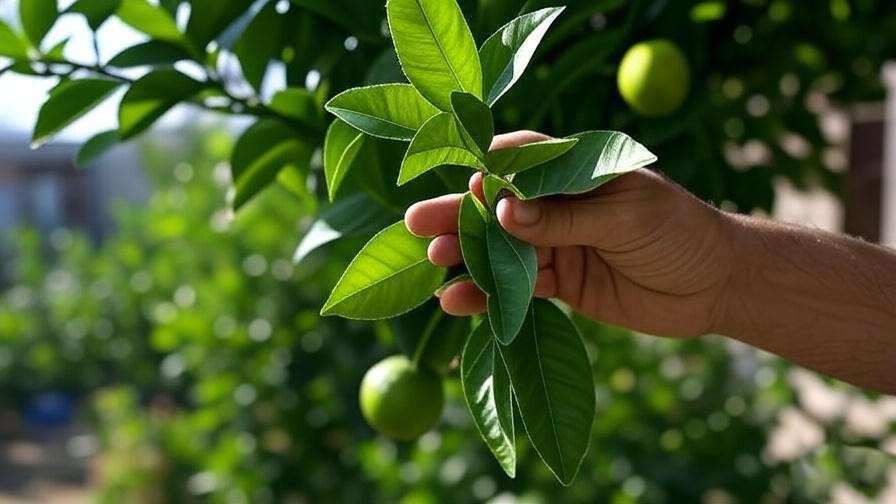Imagine the aroma of fresh, citrusy leaves wafting through your garden or kitchen, transforming your dishes with an exotic zing. The kaffir lime tree (Citrus hystrix), a Southeast Asian gem, is more than just a plant—it’s a culinary and ornamental treasure that elevates any home. Whether you’re a seasoned gardener or a curious beginner, growing a kaffir lime tree offers vibrant foliage, tangy fruit, and endless creative possibilities. This comprehensive guide will walk you through every step to cultivate a thriving kaffir lime tree, from planting to harvesting, ensuring lush leaves and bountiful fruit. With expert insights drawn from years of citrus cultivation, you’ll discover practical tips to solve common challenges and unlock the full potential of this unique tree. 🌞
H2: Understanding the Kaffir Lime Tree 🌴
H3: What is a Kaffir Lime Tree?
The kaffir lime tree, scientifically known as Citrus hystrix, is a tropical citrus native to Southeast Asia, celebrated for its distinctive double-lobed leaves and bumpy, green-to-yellow fruit. Unlike standard limes, its leaves are the star, prized for their intense citrusy aroma in Thai, Malaysian, and Indonesian cuisines. The tree typically grows 6-10 feet tall in gardens but can be kept smaller in containers, making it versatile for various spaces. Its thorny branches and glossy foliage also add ornamental charm, perfect for patios or indoor settings.
H3: Benefits of Growing a Kaffir Lime Tree at Home
Why choose a kaffir lime tree? Beyond its aesthetic appeal, it provides fresh, organic leaves and fruit for cooking, eliminating the need for store-bought ingredients. The leaves impart a unique flavor to curries, soups, and stir-fries, while the fruit’s zest enhances desserts and beverages. Additionally, the tree’s fragrance has therapeutic qualities, often used in aromatherapy to reduce stress. Growing your own ensures a sustainable supply of this specialty ingredient, plus the joy of nurturing a living piece of culinary culture.
H2: Choosing the Right Kaffir Lime Tree for Your Space 🪴
H3: Selecting a Healthy Tree
Start your journey by choosing a healthy kaffir lime tree from a reputable nursery. Look for vibrant, glossy leaves without yellowing or spots, a sign of vigor. Check the roots—white, firm roots indicate a healthy plant, while brown, mushy ones suggest rot. Avoid trees with visible pests like aphids or scale. Dwarf varieties, such as the ‘Dwarf Kaffir Lime,’ are ideal for containers or small spaces, while standard varieties suit larger gardens. Ask nursery staff about the tree’s age and care history for added confidence.

H3: Ideal Growing Zones and Climate Considerations
Kaffir lime trees thrive in USDA hardiness zones 9-11, where temperatures stay above 40°F (4°C). They love warm, humid climates, mimicking their tropical origins. If you live in a colder region, grow your tree in a pot and bring it indoors during winter. Aim for temperatures between 60-85°F (15-29°C) and humidity above 50%. For indoor growers, a south-facing window or supplemental grow lights can replicate the tree’s need for bright, sunny conditions.
H2: Planting Your Kaffir Lime Tree: Step-by-Step Guide 🌞
H3: Best Time to Plant
Spring is the optimal season for planting or repotting a kaffir lime tree, as warmer temperatures encourage root establishment. In tropical climates, early fall is also viable. Avoid planting during extreme heat or cold, which can stress the tree. For indoor planting, any time works as long as you provide consistent light and warmth.
H3: Soil Requirements for Optimal Growth
Kaffir lime trees demand well-draining, slightly acidic soil with a pH of 6.0-7.0. A mix of 50% potting soil, 25% sand, and 25% perlite works well for drainage and aeration. Incorporate organic matter like compost or aged manure to boost nutrients. For container growing, ensure pots have drainage holes to prevent waterlogging, which can lead to root rot. Test soil pH with a kit and adjust with sulfur (to lower) or lime (to raise) if needed.

H3: Potting vs. Ground Planting
Container Planting: Ideal for small spaces or colder climates, pots allow mobility to protect the tree from frost. Choose a pot at least 12-16 inches wide with drainage holes. Repot every 2-3 years to refresh soil and accommodate growth.
Ground Planting: Best for warm climates, in-ground planting allows the tree to reach full size. Dig a hole twice as wide and deep as the root ball, mix soil with compost, and ensure the root crown sits slightly above ground level.
Both methods require well-draining soil and regular monitoring for water and nutrient needs.
H2: Essential Care Tips for a Thriving Kaffir Lime Tree 🍋
H3: Watering Needs
Water deeply but infrequently, allowing the top 1-2 inches of soil to dry out between sessions. Overwatering is a common mistake—soggy roots lead to rot. In hot weather, water every 5-7 days; in cooler months, every 10-14 days. Check for signs of distress: drooping leaves indicate underwatering, while yellowing leaves suggest overwatering. Expert Tip: Use a moisture meter to gauge soil dampness, especially for container-grown trees, to ensure precision.

H3: Sunlight and Temperature Requirements
Kaffir lime trees crave 6-8 hours of direct sunlight daily. Outdoors, place them in a sunny, south-facing spot. Indoors, a bright window or full-spectrum grow lights (12-14 hours daily) work well. Protect from temperatures below 40°F by moving potted trees indoors or covering outdoor trees during cold snaps. In extreme heat (above 90°F), provide afternoon shade to prevent leaf scorch. Maintain humidity with a tray of pebbles and water or a humidifier for indoor trees.
H3: Fertilizing for Healthy Growth
Feed your kaffir lime tree with a citrus-specific fertilizer (e.g., 10-10-10 NPK) monthly during the growing season (spring to early fall). Reduce to every 6-8 weeks in winter. Organic options like compost tea or fish emulsion provide gentle, sustainable nutrients. Apply fertilizer to moist soil to avoid root burn, and follow package instructions to prevent overfeeding. Expert Insight: Watch for signs of nutrient deficiency, like pale leaves (nitrogen) or stunted growth (phosphorus), and adjust accordingly.
H3: Pruning and Shaping Your Tree
Prune in late winter or early spring to remove dead or crossing branches, improve airflow, and shape the tree. Use clean, sharp shears to make angled cuts just above a leaf node. Thin dense areas to reduce pest and disease risk, and trim leggy growth to encourage bushiness. For fruit production, prune lightly to maintain energy for flowering. Expert Tip: Disinfect tools with alcohol between cuts to prevent disease spread. Shape dwarf trees into compact forms for aesthetic container displays.

H2: Common Problems and Solutions 🐞
H3: Pests and Diseases
Kaffir lime trees are susceptible to pests like aphids, spider mites, and scale insects. Inspect leaves regularly, especially undersides, for tiny bugs or sticky residue. Treat with neem oil or insecticidal soap, applied in the early morning or evening to avoid leaf burn. For diseases, watch for citrus canker (brown spots on leaves) or root rot (mushy roots). Prevent canker by ensuring good airflow and avoiding overhead watering. Combat root rot by improving drainage and reducing watering frequency. Expert Tip: Plant marigolds nearby to deter pests naturally.

H3: Troubleshooting Yellowing Leaves or Dropping Fruit
Yellow leaves often signal nutrient deficiencies (e.g., nitrogen or iron), overwatering, or insufficient light. Test soil and adjust fertilization or watering habits. Dropping fruit can result from water stress, temperature fluctuations, or pest damage. Ensure consistent care and inspect for pests. If leaves curl, check for spider mites or low humidity. Solution: Apply a foliar spray of chelated iron for deficiencies and increase humidity for indoor trees.
H2: Harvesting and Using Kaffir Lime Leaves and Fruit 🍃
H3: When and How to Harvest
Kaffir lime tree leaves can be harvested year-round as needed, provided the tree is healthy and established. Pick mature, glossy leaves by gently twisting them off or using clean scissors to avoid tearing the stem. For fruit, wait until they turn from green to yellowish-green, typically 2-3 years after planting for young trees. Harvest fruit by cutting with pruning shears, leaving a small stem to prevent damage. Avoid overharvesting leaves (no more than 10% at a time) to maintain the tree’s vigor. Expert Tip: Harvest in the morning when essential oils are most concentrated for maximum flavor.

H3: Culinary Uses of Kaffir Lime Leaves and Fruit
Kaffir lime leaves are a cornerstone of Southeast Asian cuisine, adding a bright, citrusy note to dishes like Thai green curry, Tom Yum soup, and stir-fries. Use whole leaves during cooking (remove before serving) or finely chop fresh leaves for salads and garnishes. The fruit’s bumpy rind yields zest perfect for marinades, desserts, or cocktails. Store fresh leaves in a sealed bag in the refrigerator for up to two weeks, or freeze them for months. Dried leaves retain flavor but are less potent. Example Recipe: Add 2-3 kaffir lime leaves to a coconut milk-based curry for an authentic Thai flavor burst.
H3: Non-Culinary Uses
Beyond the kitchen, kaffir lime leaves and fruit shine in aromatherapy. Their essential oils, extracted from leaves or rind, are used in diffusers or massage oils to promote relaxation. Create a DIY room spray by steeping leaves in boiling water, cooling, and bottling. The tree’s lush foliage also makes it a stunning focal point in gardens or indoor spaces. Creative Idea: Dry leaves and tuck them into sachets for natural drawer fresheners. The fruit’s unique texture can even inspire decorative arrangements for home decor.
H2: Advanced Tips for Maximizing Growth and Yield 🌟
H3: Propagating Your Kaffir Lime Tree
Propagating a kaffir lime tree allows you to expand your collection or share with others. Cuttings are the most reliable method: Take a 6-inch stem cutting with 2-3 nodes, remove lower leaves, dip in rooting hormone, and plant in a moist mix of perlite and potting soil. Keep in a warm, humid spot with indirect light for 4-6 weeks until roots form. Grafting onto citrus rootstock can improve disease resistance but requires skill. Seeds are less common due to slow growth and variable traits. Expert Insight: Mist cuttings daily to maintain humidity and boost rooting success.
H3: Seasonal Care Adjustments
Winter Care: In colder climates, move potted kaffir lime trees indoors to a sunny spot or under grow lights. Reduce watering to every 2-3 weeks and stop fertilizing to mimic dormancy. Protect outdoor trees with frost blankets if temperatures dip below 40°F. Summer Care: Increase watering during heatwaves, ensuring soil stays moist but not soggy. Provide afternoon shade in extreme heat (above 90°F) to prevent leaf burn. Monitor for pests, as warm weather can spur infestations. Tip: Rotate indoor pots every few weeks for even light exposure.
H3: Companion Planting for Kaffir Lime Trees
Companion planting enhances your kaffir lime tree’s health. Plant marigolds or nasturtiums nearby to repel aphids and whiteflies. Basil or lemongrass can deter pests while complementing the tree’s culinary vibe. Avoid planting near heavy feeders like tomatoes or corn, which compete for nutrients. Expert Tip: Create a pest-repellent border with lavender or rosemary for added protection and aesthetic appeal. Ensure companions have similar water and light needs to avoid stressing the tree.
H2: Frequently Asked Questions (FAQs) ❓
How long does it take for a kaffir lime tree to bear fruit?
Most kaffir lime trees produce fruit within 2-3 years when grown from cuttings or nursery stock, though seed-grown trees may take 5-7 years. Proper care—adequate sunlight, fertilization, and pruning—accelerates fruiting.
Can I grow a kaffir lime tree indoors year-round?
Yes, with sufficient light (6-8 hours daily via a south-facing window or grow lights) and humidity (50% or higher). Use a well-draining pot and monitor for pests, as indoor environments can attract spider mites.
Why are my kaffir lime tree leaves curling?
Curling leaves often indicate pest issues (e.g., spider mites), low humidity, or underwatering. Inspect leaves, increase humidity with a pebble tray, and ensure consistent watering.
How do I prevent pests without chemicals?
Use neem oil, insecticidal soap, or companion plants like marigolds. Regularly clean leaves with a damp cloth to remove dust and deter pests. Maintain good airflow through pruning.
What’s the difference between kaffir lime and regular lime trees?
Kaffir lime trees (Citrus hystrix) have double-lobed leaves and bumpy, less juicy fruit compared to regular limes (Citrus aurantifolia). Kaffir leaves are primarily used for flavor, while regular limes are valued for juice.
H2: Conclusion: Your Path to a Lush, Productive Kaffir Lime Tree 🌿
Growing a kaffir lime tree is a rewarding journey that blends horticultural skill with culinary creativity. By following this guide—covering planting, watering, fertilizing, pruning, and pest control—you’re equipped to nurture a thriving tree that yields vibrant leaves and fruit. Whether you’re flavoring a curry or enhancing your garden’s beauty, your kaffir lime tree will flourish with consistent care. Start today, experiment with a Thai-inspired recipe, or share your progress in the comments below. For more plant care tips, explore our guides on citrus growing or organic gardening. 🌱













